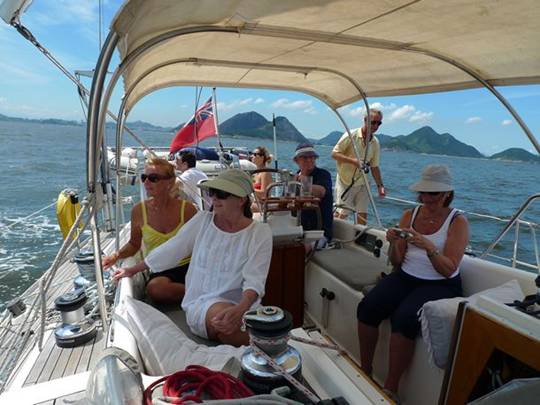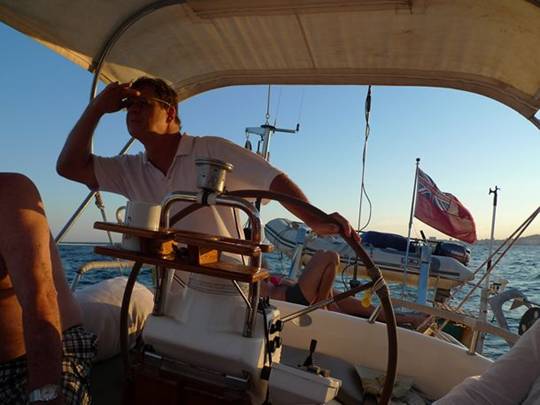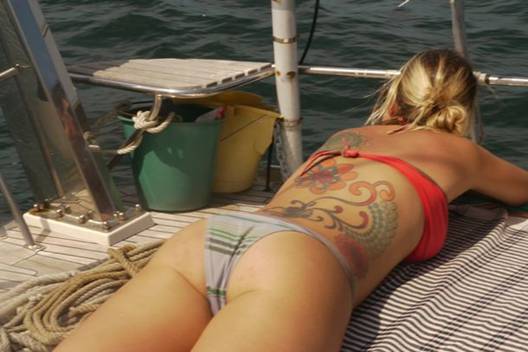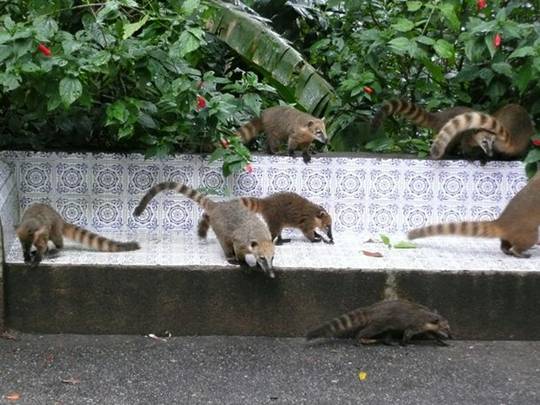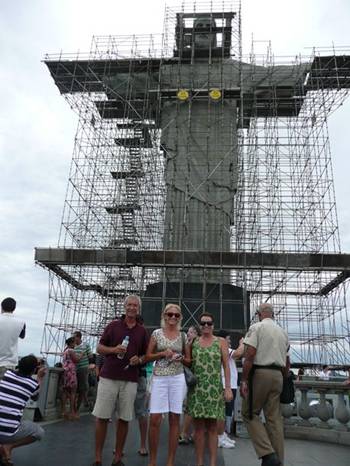The Ilhas Cagarras and a Tour of Inland Rio

|
Date:
Position:
Saturday was the day we acted as host for our
Day out to Ilhas
Carragas
Marcelo in control We hadn’t expected any culture today but we got it. Ana peeled off her T-shirt for a bit of serious sunbathing on the way to the islands to reveal a stunning tattoo which occupied most of her back. Whereas most tattooees are satisfied with a bald eagle, a dolphin, or a bleeding heart with “Kevin” beautifully inscribed underneath, Ana had an original work of art by the leading Brazilian contemporary artist Beatriz Milhazes who is a friend of hers. Spiralling flowers cascaded down Ana’s back. Living art at its best, Milhazes lesser works are to be found at the Tate Modern and the Pompidou Centre.
Milhazes less interesting works are to be found in Tate
Modern The Ilhas Cagarras are quite barren and are a nature reserve for breeding frigate birds, vultures and brown boobies. With brilliant views over Ipanema and Copacabana, it was a perfect anchorage where we swam, ate and drank before sailing back at dusk. Having said goodbye to Marcelo, Vivien, Ana and Daniel we were then taken by Lilian and Nigel back to their home in Barra, a new district created over the last 25 years that spreads about 30 miles west of old Rio. Ultra-modern, it is a strip of alternating sophisticated shopping malls and large condominiums of houses and apartments in spacious landscaped estates which provide a very secure environment. Barra runs down an almost endless beach so no one is more than about 5 minutes away from the sea. We had a splendid evening with Anglo-Portuguese fellow guests Rodney and Gill which stretched well into the night. The following morning we were up early again for The
Grand Tour of Rio, Act II with Vivien and Marcelo. This time it was to see some
of
A family of racoons in Tijuca National
Park Back in the 18th century the springs in the
hills provided water, flowing down an aqueduct, for the developing city of
We then climbed aboard the funicular railway to climb the
steep mountain to the top of Time for lunch, we went to a fabulous restaurant called Aprazível in the pretty district of Santa Teresa where all the artists live and where we lunched on Brazilian specialities. Followed up by a tasting of different types of cachaça, we arrived back at the boat ready for a very early night.
Marcelo and Vivien admire the view
Cristo Redentor shrouded in
scaffolding |
